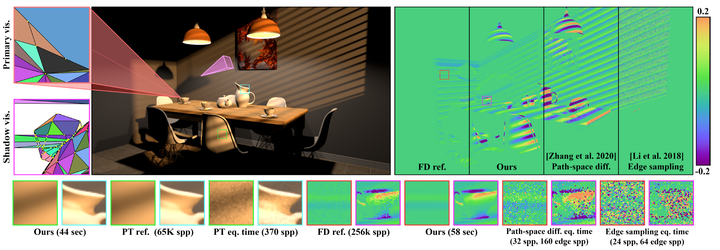Vectorization for Fast, Analytic, and Differentiable Visibility

Abstract
In Computer Graphics, the two main approaches to rendering and visibility involve ray tracing and rasterization. However, a limitation of both approaches is that they essentially use point sampling. This is the source of noise and aliasing, and also leads to significant difficulties for differentiable rendering. In this work, we present a new rendering method, which we call vectorization, that computes 2D point-to-region integrals analytically, thus eliminating point sampling in the 2D integration domain such as for pixel footprints and area lights. Our vectorization revisits the concept of beam tracing, and handles the hidden surface removal problem robustly and accurately. That is, for each intersecting triangle inserted into the viewport of a beam in an arbitrary order, we are able to maintain all the visible regions formed by intersections and occlusions, thanks to our Visibility Bounding Volume Hierarchy (VBVH) structure. As a result, our vectorization produces perfectly anti-aliased visibility, accurate and analytic shading and shadows, and most important, fast and noise-free gradients with Automatic Differentiation (AD) or Finite Differences (FD) that directly enables differentiable rendering without any changes to our rendering pipeline. Our results are inherently high-quality and noise-free, and our gradients are one to two orders of magnitude faster than those computed with existing differentiable rendering methods.